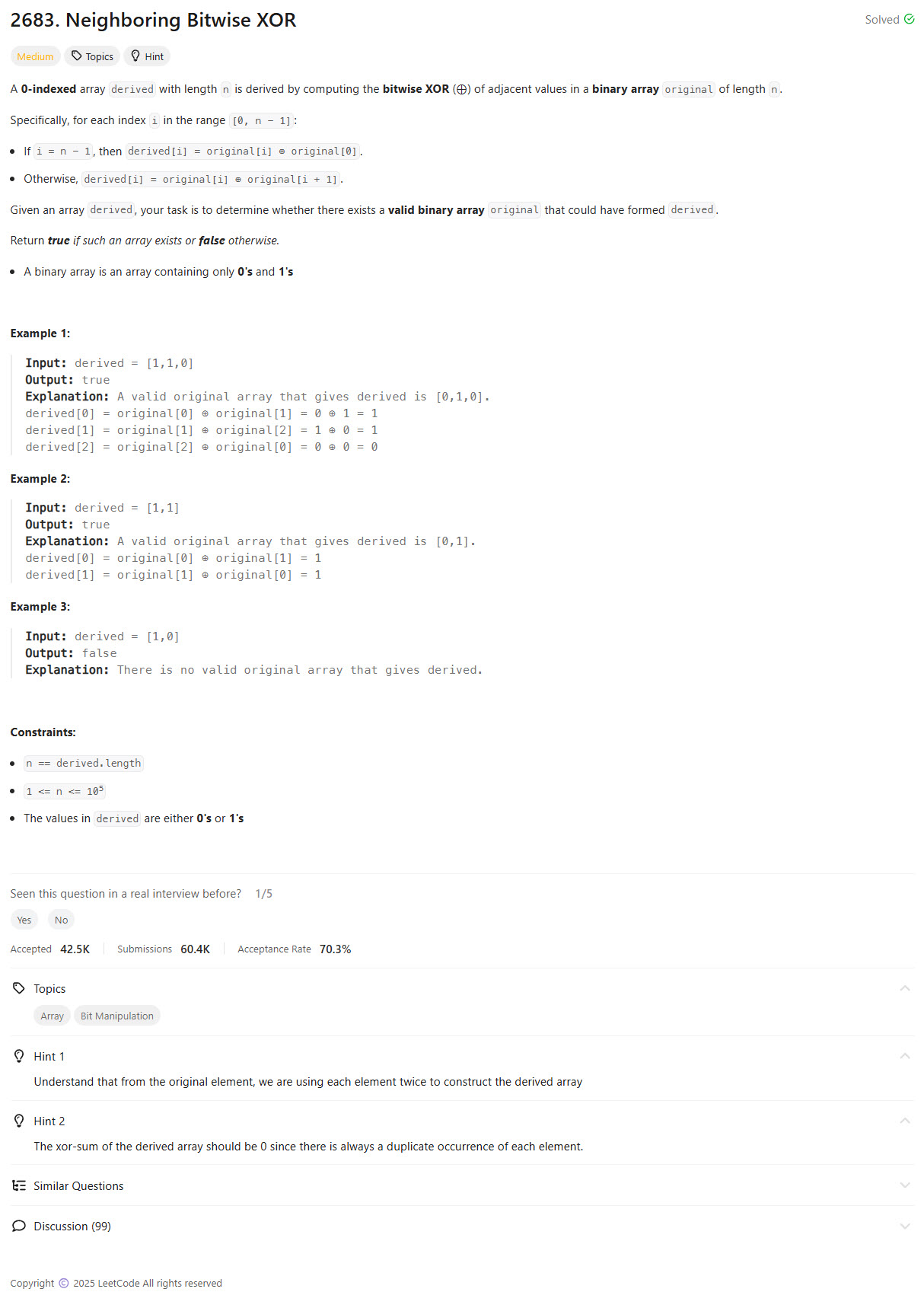Problem Statement

Brute Force [TLE]
class Solution:
def doesValidArrayExist(self, derived: List[int]) -> bool:
N = len(derived)
def isValid(curr):
i = 0
n = len(curr)
for i in range(1, n, 2):
next_idx = (i + 1) % n
if curr[i] != curr[next_idx]:
return False
return True
@cache
def helper(i, curr):
if i == N:
return isValid(curr)
if derived[i] == 1:
return helper(i + 1, curr + '10') or helper(i + 1, curr + '01')
return helper(i + 1, curr + '00') or helper(i + 1, curr + '11')
return helper(0, '')
Editorial
Approach 1: Simulation
class Solution:
def doesValidArrayExist(self, derived: List[int]) -> bool:
# Create an original array initialized with 0.
original = [0]
for i in range(len(derived)):
original.append(derived[i] ^ original[i])
# Store the validation results in checkForZero and checkForOne respectively.
check_for_zero = original[0] == original[-1]
original = [1]
for i in range(len(derived)):
original.append(derived[i] ^ original[i])
check_for_one = original[0] == original[-1]
return check_for_zero or check_for_one
Approach 2: Cumulative XOR
class Solution:
def doesValidArrayExist(self, derived: List[int]) -> bool:
XOR = 0
for element in derived:
XOR = XOR ^ element
return XOR == 0
Approach 3: Sum Parity
class Solution:
def doesValidArrayExist(self, derived: List[int]) -> bool:
return sum(derived) % 2 == 0
